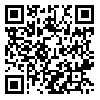Volume 1, Issue 3 (7 2003)
sjsph 2003, 1(3): 67-74 |
Back to browse issues page
Download citation:
BibTeX | RIS | EndNote | Medlars | ProCite | Reference Manager | RefWorks
Send citation to:



BibTeX | RIS | EndNote | Medlars | ProCite | Reference Manager | RefWorks
Send citation to:
Asgari G, Nateghpour M, Rezaian M. PREVALENCE OF INTESTINAL PARASITES IN THE INHABITANTS OF ISLAM - SHAHR DISTRICT. sjsph 2003; 1 (3) :67-74
URL: http://sjsph.tums.ac.ir/article-1-295-en.html
URL: http://sjsph.tums.ac.ir/article-1-295-en.html
Abstract: (9363 Views)
To determine the prevalence of various intestinal parasitic infections, we examined 966randomly collected stool specimens from urban areas and 569 such samples from the ruralregions. These were examined using formalin-ether sedimentation and direct smearmethods. From the total of 1535 specimens, 143 that belonged to 1-6 years old childrenwere examined by scatch tape method.The results indicated that 53.2% of the subjects were infected with intestinal protozoa andhelminths with the following prevalence rates:Entamoeba histolytica 9.6%, E. coli 16%, E.hartmanni 7%, Endolimax nana 2.6%,Iodomoeba biitschlii 1.8%, Dientamoeba fragilis 1.5%, Chi/omastix mesnili 0.4%), Giardialamblia 18.8%, Blastocysts hominis 16.5%, Dicrocoelium dendriticum 0.1%, Taeniasaginata 0.2%, Hymenolopis nana 1.4%, Ascaris lambricodies 0.3%, Enterobiusvermincularis (using scatch tape method) 0.7%, E.vermicularis (using formalin - ethermethod) 28.7%,Trichostrongylusspp.0.1%,Strongyhidessiercorials 0.3% and Trichuristrichiura 0.1%.Rural people were significantly more likely to bear helminthic infections than urbanresidents (4.9% versus 2.1%).E.histofytica wasmore prevalent among men (11% versus 7.1%) and, interestingly,age-specific infection rates for giardiasis and amebiasis showed contrasting patterns in thisstudy
| Rights and permissions | |
 |
This work is licensed under a Creative Commons Attribution-NonCommercial 4.0 International License. |





